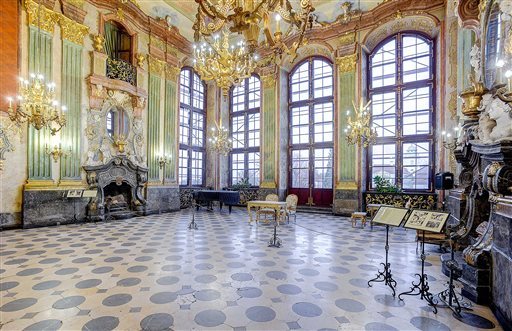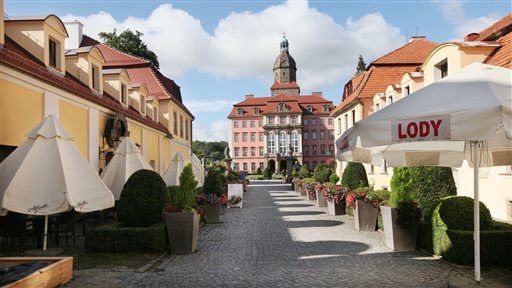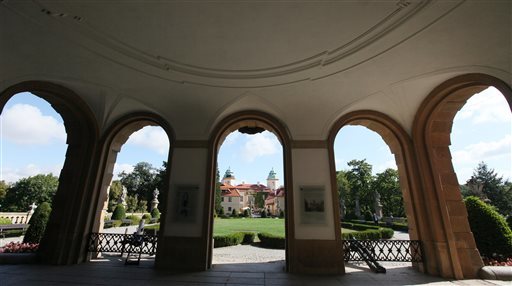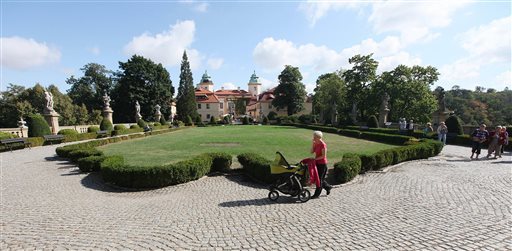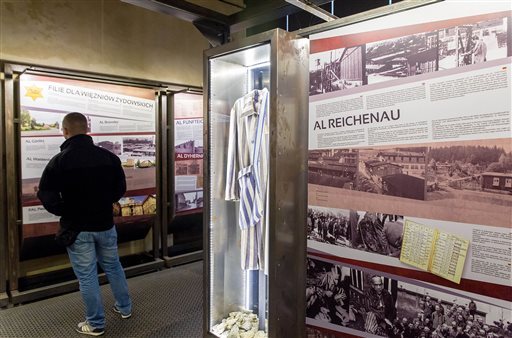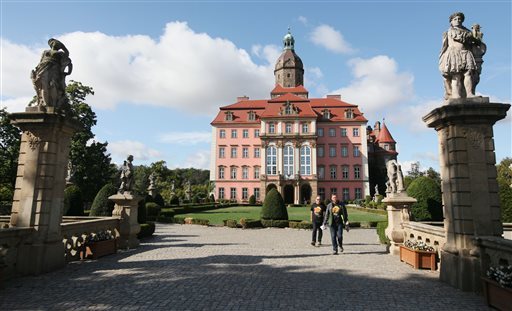WALBRZYCH, Poland — If you are fascinated by World War II secrets, treasures and ghosts, then Ksiaz Castle is the place for you.
The breathtaking site sits on a wooded hilltop in the city of Walbrzych, in southwestern Poland. The area drew worldwide attention recently, when two explorers announced they had located a secret tunnel that they say hides a wartime armored train with a precious load. The news revived a local legend of a train laden with gold and valuables that the Nazis reportedly hid from the Red Army in the mountains in 1945.
The authorities are taking steps to verify the explorers’ claim, but the former coal mining center of Walbrzych (known as Waldenburg in its German era) and the castle are already the richer for the tourists and reporters whose numbers soared after the news of the alleged find broke.
Even without the gold train story, visitors will enjoy the beauty of the Owl Mountains in the Sudeten Range, the area’s rich and dramatic history and a visit to the magnificent Ksiaz Castle. The castle was seized by the Nazis in 1941 as a future residence for Hitler. Many of the historic interiors were torn down in a misconceived drive for modesty. The Nazis then began to build a bunker some 50 meters (165 feet) beneath the castle to protect Hitler from Allied bombs.
Eventually a labyrinth of tunnels and bunkers was built using forced labor from the nearby Gross-Rosen concentration camp, but the complex was not completed by the war’s end and its true purpose remains a mystery 70 years after the war. Some historians say the complex was to become Nazi command headquarters, others believe the tunnels were to house an armaments factory or a nuclear weapons laboratory. Some of the tall, damp tunnels can be visited by tourists, but many remain unexplored. The legend of a hidden gold train was first brought to light by a retired coal miner, Tadeusz Slowikowski, in the 1970s, but it’s been kept alive by the mysteries surrounding the complex.
The massive gray and pink castle links many architectural styles, dating back to the 13th century and Slavic rule. It passed into Austrian and then Prussian hands and was known as Schloss Furstenstein, while repeatedly being expanded, the last time in the early 20th century. It was private property of the aristocratic Hochberg family since the early 16th century, until the Nazis seized it in order to punish the Hochbergs, who did not support Hitler. When borders shifted after World War II, this Lower Silesia region became part of Poland.
The castle’s last owner, evicted by the Nazis, was Wales-born Mary Theresa Olivia Cornwallis-West, first wife of Prince Hans Heinrich XV. Bearing the title of the Princess of Pless, but popularly known as Daisy, she was a great beauty, a socialite, and related by marriage to Winston Churchill. Her brother George was the second husband of Churchill’s mother, Jennie. The princess died in 1943 and was buried in the Hochberg Mausoleum near the castle, but her servants moved the body a number of times to protect the grave from plunder by Soviet troops, who occupied the area from May 1945 until the end of 1946.
As a result, Princess Daisy’s resting place remains unknown. It’s another castle mystery with its own legend: Her spirit is said to come back for visits.
———
If You Go…
KSIAZ CASTLE: http://www.en.ksiaz.walbrzych.pl/ . Located in Walbrzych, Poland. Ticket office open Monday-Friday, 10 a.m.-3 p.m.; Saturday-Sunday, 10 a.m.-4 p.m. Variety of tours available. Accommodations on castle grounds: Hotel Ksiaz or Hotel Przy Oslej Bramie, with restaurants and a cafeteria. There are also other hotels and eateries in Walbrzych, located roughly 350 kilometers (220 miles) from Berlin and 450 kilometers (280 miles) from Warsaw. The nearest airport is in Wroclaw, which has train and bus connections to Walbrzych.







